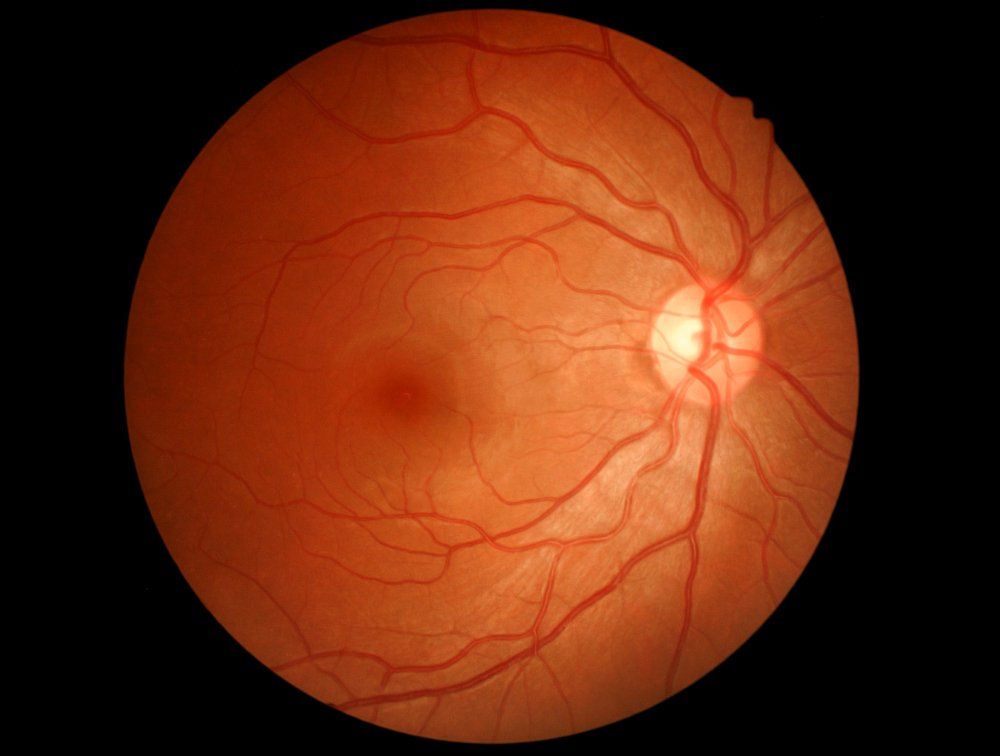Article
Case: Intermittent Headaches and Blurred Vision
Author(s):
A 20-year-old female presents with headache symptoms that, upon fundoscopic examination, potentially point to a medical emergency.
Appearance of normal optic nerve. ©memorisz/Shutterstock

CASE REPORT
History
A 20-year-old female complains of intermittent headaches and blurred vision for two weeks. She has not had headaches or vision changes prior to the past two weeks. Her past medical history is unremarkable. About 2 months prior to this visit, she was prescribed oral tetracycline for treatment of acne, and her acne has improved with the treatment. She does not take any other medications.
Physical examination
On physical examination, the patient has normal heartbeat and respiratory sounds. She has normal pulses and does not have abdominal distention. On neurological examination, muscle strength, sensation, reflexes, coordination, and gait are normal. The patient’s vision is normal, and she does not wear corrective lenses.
Fundoscopic examination shows mild papilledema in both eyes, and the left eye appears slightly more swollen than the right side. Brain MRI was normal. She had a lumbar puncture (LP) with an opening pressure of 330 cm H2O, clear fluid, and no abnormalities on CSF cytology.
Diagnosis: Pseudotumor cerebri
Pseudotumor cerebri is a condition caused by increased cerebrospinal fluid (CSF) pressure in the absence of a brain mass. The exact pathophysiology is unclear, but it may be caused by decreased CSF reabsorption. This process can be triggered by medications such as tetracycline, isotretinoin, oral contraceptives, and other antibiotics. Several medical conditions are associated with pseudotumor cerebri, including kidney disease and Addison disease.
Pseudotumor cerebri is most likely to occur in young women and among people who are overweight, but it can occur in men, in people of all ages, and among those who are normal weight or underweight. Often there is no identified cause, in which case it would be considered idiopathic. Idiopathic pseudotumor cerebri is often called idiopathic intracranial hypertension.
Treatment
When a patient has papilledema, this can be a sign of a medical emergency. Papilledema is an indication for an urgent brain CT or brain MRI to rule out a brain mass, focal or generalized cerebral edema, or obstruction of CSF flow, which may require emergency surgical intervention.
If there is no mass or obstruction, the next step includes considering other causes of increased intracranial pressure, such as medications or medical conditions. If the patient is prescribed a medication that can cause pseudotumor cerebri, the triggering agent should be discontinued. Normally, discontinuing the triggering agent prevents worsening of the fluid pressure, but does not reduce CSF pressure. Untreated pseudotumor cerebri can result in permanent loss of vision due to pressure on the optic nerves. Diuretics (eg, acetazolamide, furosemide) or oral steroids can be prescribed to reduce the fluid.
An LP is a more definitive step for both diagnosis and treatment of the condition. The LP should be done with the patient lying down so that an accurate opening pressure can be obtained. A normal opening pressure ranges from 100 cm to180 cm H2O, and patients who are obese may have opening pressures up to 200 cm or even 250 cm H2O. A young patient with an opening pressure above 200 cm H2O is considered to have a high CSF pressure. Generally, the fluid may flow rapidly in patients who have pseudotumor cerebri.
The LP is a diagnostic as well as a therapeutic tool. CSF should be removed during the LP to relieve the pressure. The fluid should be allowed to drip slowly using a small gauge needle and should not be activity withdrawn. It is recommended to check the CSF pressure before removing the needle to ensure that the closing pressure is normal. However, an excessive amount of fluid should not be removed, as a relatively rapid drop in CSF pressure can cause a severe headache. One of the complications of the LP can include a spinal fluid leak, in which case a blood patch is usually used to close the leak.
Most patients with pseudotumor cerebri recover after treatment with LP and medication. However, clinical symptoms and papilledema may recur. If repeated LPs are required, a ventricular shunt may be placed to prevent fluid buildup.
Pseudotumor cerebri is also referred to as idiopathic increased intracranial pressure because there is no mass causing the increase in pressure. The name may cause some confusion with normal pressure hydrocephalus (NPH), which is also characterized by excessive cerebrospinal fluid. However, NPH is a different condition that causes gait abnormalities and dementia. It is associated with enlarged ventricles, which are usually clearly visualized on brain MRI or brain CT. People with NPH have normal CSF opening pressure on LP and do not benefit from removal of CSF.
Take home points
• Papilledema should be evaluated promptly with brain imaging
• Pseudotumor cerebri should be treated in a timely manner to reduce intracranial pressure and to avoid long-term sequelae
• If medications are used to reduce intracranial fluid, a follow-up fundoscopic examination should be done within 2 to 3 days after initiation of medication. If papilledema has not improved with medication, an LP is recommended
Recommended reading
Kanagalingam S, Subramanian PS. Update on Idiopathic Intracranial Hypertension. Curr Treat Options Neurol. 2018;20:24.
Kosmorsky GS. Idiopathic intracranial hypertension: pseudotumor cerebri. Headache. 2014;54:389-93.
Newsletter
Keep your finger on the pulse of neurology—subscribe to NeurologyLive for expert interviews, new data, and breakthrough treatment updates.




